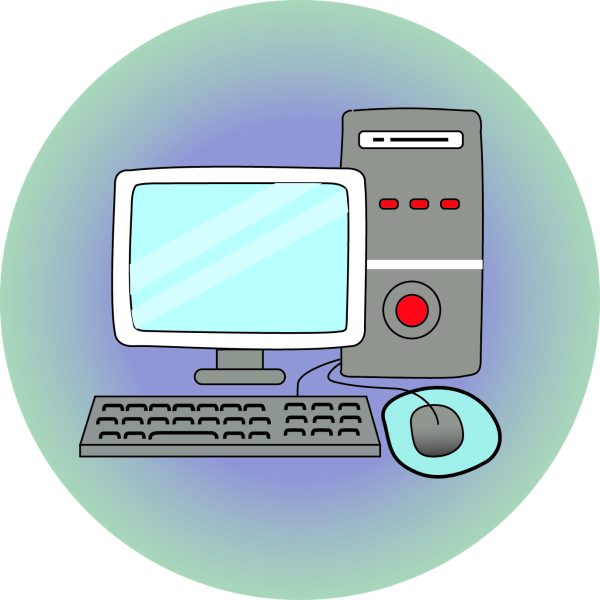The Impact of Streaming Services on Music
October 6, 2022
With every passing day, people, companies, artists, and many others question what the best strategy of maximizing profits while staying ethically focused is. While large corporations appear to be the complete opposite of smaller musical artists, they all keep this idea in mind while making a product for their audience. This has an immeasurable impact on how the music industry functions, and eventually the music you listen to.
First, it could be unclear where this complex, diverse system stems from. One of the most influential factors in the music industry is streaming platforms. An article from the BBC explains,“[Spotify was] Founded by Daniel Ek and Martin Lorentzon, Spotify actually started as a small start-up in Stockholm, Sweden. They developed the platform in 2006 as a response to the growing piracy problem the music industry was facing.” From there, other platforms like Apple and YouTube Music developed as competitors. While platforms like Spotify were created with good intentions and the objective of preventing piracy, many issues have arisen. These platforms often disproportionately pay artists and influence the music industry to produce shorter songs.
According to Midia Research, 31 perceny of streaming service users use Spotify, and 15 percent use Apple Music, yet these platforms do not pay artists accordingly. Musician Wave shows that Spotify pays artists $0.0043 per stream, whereas Tidal (a much smaller platform with much less revenue) managed to pay artists $0.0125 per stream. In simpler numbers, an artist on Spotify has to achieve 229 streams to make one dollar, yet an artist on Tidal only has to achieve 80 streams to make a dollar. Many users genuinely do not realize the disproportion in pay. Freshman Alex Karpman says, “I do not really know how Spotify pays artists, but I have heard of some protests [regarding the payment of artists] before.” Spotify does a great job of marketing and redesigning their platform, encouraging users to stay with Spotify and ignore protests. Sophomore Sam Betts states, “I like that Spotify has other features besides just music. I love seeing my ‘Spotify wrapped’ at the end of each year, especially what my top 5 songs are.” Since Spotify users make up so much of the market, artists are almost forced to upload their music.
Many other issues emerge from this pay per stream system of paying artists. Since artists are paid by stream, many producers encourage artists to shorten their songs. Senior Viraaj Singh says,“I have noticed songs getting slightly shorter. While I cannot really name artists who produce really concise songs, I have noticed a shift across all newer songs.” Junior Dia Aggarwal further explains this idea, stating, “I have noticed that throwback songs typically seem to be longer.” This shift is not specific to one genre. Musical artists of any style deal with the industry as a whole, and while certain genre listeners may be more inclined to purchase individual songs and records, the great majority still rely on music streaming. Artists have to factor this into producing music, and many want to maintain musical integrity. A love of music is why the bulk of artists chose music as their lifelong career. If musicians start compromising the quality of the music they produce, music will change even more than it already has.
Additionally, the recommended playlists/songs on streaming services have been quite controversial. An article from the Grammy Awards explains “Music streaming platforms are partly at fault [for the misogynistic gender imbalance of the music industry], as not only do their popular playlists favor male artists, research shows their algorithms do as well.” This illustrates how the streaming industry promotes gender inequality through something as simple as pre-made playlists. These playlists may seem partially irrelevant, but they typically account for a great deal of the streams on a certain album or song. This leads women to be paid less, and limits opportunities, as artists with more streams are allowed to perform at specific exclusive events and festivals. In response to this argument, Spotify has created a link to “share new music for playlist consideration.” On the flip side, many argue that these ready-made playlists help them discover new artists and songs. Aggarwal states, “Apple music has a feature where it suggests playlist or recommends songs. I have discovered a lot of new music, and even some of my favorite songs from this.” Karpman adds, “I usually like the suggestions I get on Spotify, and they generally include artists I have never heard of.” Playlists like these can encourage people to step outside of the small box of mainstream music, but they can also threaten artist opportunities–especially to those who belong to already marginalized groups.
In summary, music platforms have their pros and cons, just like anything else. Consumer use of music streaming services is not declining any time soon, and regressing back to the archaic systems of physical music, like CDs and records, is not a viable option in our modern world. The next steps are really up to the CEO and founders of streaming giants. So listen to the music you love, in the form you find most fitting for your life.







Kirk Clendinning • Jan 20, 2023 at 10:05 am
Nice article. You got quoted by the ftdmg dot com website in the resources section. People like you can spread the word and change the world.